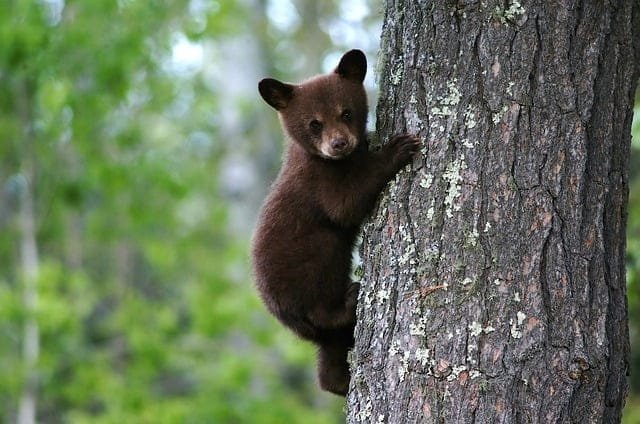The Sweet Temptation: Can Bears Eat Chocolate?
Bears have an innate attraction to chocolate, mainly due to its sweet smell and taste. However, despite their love for this indulgent treat, bears should never consume chocolate. This seemingly harmless delight contains theobromine, a toxic substance for bears. Theobromine affects the central nervous system and cardiovascular system of these magnificent creatures.
In this blog post, we will delve into the risks and consequences associated with bears consuming chocolate. By understanding the dangers involved, we can take necessary precautions to protect these animals from harm and ensure their well-being in their natural habitats.

Understanding Chocolate Poisoning in Bears
Bears’ attraction to chocolate can be attributed to their keen sense of smell, which allows them to detect the sweet aroma emanating from this delectable treat. Additionally, the high sugar content in chocolate appeals to bears’ taste buds, making it even more enticing for them.
However, what makes chocolate dangerous for bears is the presence of theobromine, a toxic substance that affects their central nervous system and cardiovascular system. Theobromine is found in varying amounts in different types of chocolate, with darker chocolates containing higher concentrations.
While humans and some animals can metabolize theobromine efficiently, bears lack the necessary enzymes to break down this compound effectively. As a result, when bears consume chocolate, theobromine accumulates in their system and can lead to severe health issues.

The effects of theobromine poisoning in bears can range from restlessness and increased heart rate to muscle tremors. In more severe cases, it can cause seizures, internal bleeding, and even death. Given these risks, it is crucial to understand why bears should never be fed or allowed access to chocolate.
By raising awareness about the dangers of chocolate consumption for bears and taking preventive measures to keep them away from this harmful substance, we can ensure their well-being and contribute to the conservation of these magnificent creatures.
Risks and Consequences for Bear Populations
Symptoms of Chocolate Poisoning in Bears
When bears consume chocolate, they may exhibit various symptoms of poisoning. These can include restlessness, increased heart rate, and muscle tremors. In more severe cases, bears may experience seizures, internal bleeding, and even death. It is crucial to recognize these symptoms as early as possible to provide appropriate veterinary care and minimize the harm caused by chocolate consumption.
Impact on Bear Populations
The negative impact of chocolate poisoning extends beyond individual bears to bear populations as a whole. Consumption of chocolate can disrupt their natural behavior patterns, affecting their ability to forage for food and interact with their environment. This disruption can lead to nutritional deficiencies and reduced overall health.
Furthermore, chocolate poisoning can have detrimental effects on bear reproduction. The toxic effects of theobromine can interfere with reproductive processes and reduce fertility rates among female bears. This can result in a decline in bear populations over time.
Another consequence of bears consuming chocolate is the potential increase in human-bear conflicts. As bears become accustomed to seeking out chocolate from human sources, they may venture closer to residential areas or campsites in search of this enticing treat. This behavior puts both humans and bears at risk and can lead to dangerous encounters.
To protect bear populations, it is essential to prevent them from accessing chocolate and educate the public about the dangers of feeding wildlife. By promoting responsible wildlife viewing practices and advocating for proper food storage and disposal methods, we can help ensure the well-being of both bears and humans while preserving these magnificent creatures in their natural habitats.
Preventing Chocolate Poisoning in Bears
Proper Food Storage and Disposal
One of the most effective ways to prevent chocolate poisoning in bears is by ensuring proper food storage and disposal. It is crucial to store food and trash securely, making it inaccessible to bears. This includes keeping chocolate products stored in airtight containers or locked cabinets where bears cannot reach them. By eliminating their access to chocolate, we can significantly reduce the risk of bears consuming this toxic substance.
Additionally, it is essential to dispose of chocolate waste properly. Leftover chocolate or wrappers should be disposed of in bear-resistant trash cans or taken away from areas frequented by bears. Proper disposal helps avoid attracting bears with the scent of chocolate and reduces the likelihood of accidental ingestion.
Educating the Public
Raising awareness about the dangers of feeding bears chocolate is vital for preventing chocolate poisoning incidents. By educating the public about the harmful effects of chocolate on bear health, we can discourage people from intentionally or unintentionally feeding wildlife.
Promoting responsible wildlife viewing practices is another crucial aspect of public education. Encouraging individuals to observe bears from a safe distance without attempting to feed them helps maintain natural behaviors and reduces the risk of human-bear conflicts. Sharing information through educational campaigns, signage, and online resources can help spread awareness about responsible behavior around wildlife.
By implementing these preventive measures and educating others, we can protect bears from the dangers of consuming chocolate. It is our collective responsibility to ensure that these magnificent creatures can thrive in their natural habitats without facing unnecessary harm caused by human actions.
Protecting Bears from Chocolate Poisoning
Understanding the risks associated with chocolate poisoning is crucial for the conservation of bear populations. By implementing preventive measures such as proper food storage and disposal, we can minimize the chances of bears accessing chocolate and suffering its toxic effects. Educating the public about the dangers of feeding bears chocolate and promoting responsible wildlife viewing practices further contributes to protecting these magnificent creatures.
Let’s work together to ensure that bears can enjoy their natural diet without the dangers posed by chocolate. By respecting their habitats and taking steps to prevent chocolate poisoning, we can safeguard their well-being and preserve these incredible animals for future generations to admire and appreciate.




